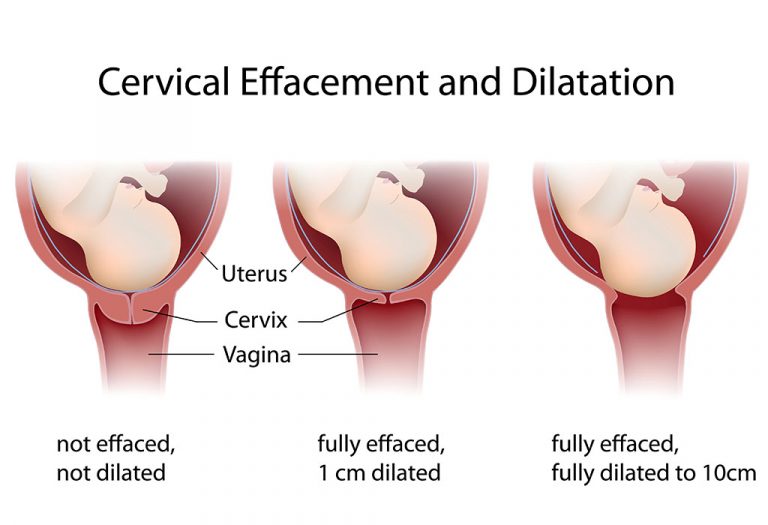Vertex Presentation: Position, Risks, & What It Means
During the last few weeks of pregnancy, most babies naturally get into the right position for delivery, known as the fetal presentation vertex. However, some babies may not settle into the optimal head-down position (vertex position), making birth more challenging. If a baby remains in the breech position, the pregnant woman may attempt gentle techniques to encourage the baby to turn, but if unsuccessful, a caesarean section might be recommended (1). Doctors closely monitor fetal positioning, and if you’re expecting, they likely have explained vertex presentation and its importance for a smooth delivery. Understanding the vertex position with your baby is crucial, so if you want to learn more about vertex presentation and how it affects childbirth, continue reading this article for detailed insights.
What Is Vertex Position?
The vertex position is the position, a baby needs to be in when you give birth vaginally. Most babies get into the head down, or vertex position, at around 33– 36 weeks, when you get closer to the delivery date (2). Even babies who are in the breech position until the last weeks can get into the vertex position last minute. But once the baby is low enough in the pelvis region and is head down, they do not change.
Although the baby’s head can take different and more specific positions during the actual process of delivery, if the baby is in the vertex position in pregnancy, then you have nothing to worry about.
Why Is Vertex Position Important for Labor and Delivery?
The vertex position (head-down, with the baby’s head facing the mother’s back) is crucial for labor and delivery because it allows the smallest and most flexible part of the baby—the head—to navigate the birth canal first, making passage smoother and reducing complications. This optimal positioning promotes efficient contractions, minimizes the risk of prolonged labor, and lowers the chances of interventions like forceps delivery, vacuum extraction, or emergency C-section (3). Additionally, a proper vertex presentation ensures safer delivery by decreasing the likelihood of umbilical cord compression or birth injuries, making it the ideal fetal position for a successful vaginal birth.
Giving Birth in Vertex Position
As the baby moves through the birth canal during the delivery, they will actually do a lot of turning and twisting to fit through, even though they are head down at the beginning of the delivery. Unlike other mammals, where the babies simply drop straight through because of the wide and straight birth canal, the ratio of the space in the birth canal and the human head is a very tight squeeze.
In order to fit through the birth canal, the baby will have to turn and flex their head in various positions. When the delivery begins, most babies usually get into the vertex fetal position and will move down to the opening of your vagina. You will have to push until the baby’s head is ready to come out. Short breaths can be taken to help the head move out slowly and safely. A slow birth can also help stretch the muscles and skin around the vagina during the delivery.
Are There Any Risks for the Baby in the Vertex Position?
A baby in the cephalic vertex presentation, as it moves through the birth canal, may experience a few complications.
- For instance, babies that are considered to be on the larger side may face difficulties when passing through the birth canal even if they are in the head-down position.
- Babies are considered ‘macrosomic’ when they are over 4500 grams (9 pounds and 4 ounces). ‘Macrosomic’ is simply a medical term for larger babies. These babies, even though they are in the head-down position, are more likely to get their shoulders stuck during delivery (4).
- Depending on the size and the age of the baby, the doctor will figure out an individualized birth plan for you.
How to Get the Baby into the Vertex Position
There are various exercises an expecting mother can do to help the baby get in the vertex position. Though this does not mean that your baby will definitely get in position, these exercises can increase the possibility. Here are a few exercises to help your baby get in position:
- While you are sitting down, use a cushion or a pillow so your bottom is higher than the knees.
- Once in a while, you can do some front tilts by sitting on a big exercising ball.
- Get on your knees on the floor. Lower your chest down slowly to make sure that the hips are at their highest point for around 15 minutes.
Remember that keeping your hips higher than the knees will help the baby settle easier. However, do not stay in a position for too long, and make sure you move regularly.
Can a Baby Turn From Vertex Position During Delivery?
Some pregnant women, whose baby is already in the correct vertex position, might still be at the risk of giving birth to a baby who turns during the last few minutes.
- Pregnant women with polyhydramnios (extra amniotic fluid) are considered to be at a higher risk for having a baby turn from vertex position to breech at the last minute (5).
- The breech position is when the baby tries to come out bottom-first, feet-first, or even both.
- At 36 weeks of pregnancy, if your baby has not changed to the vertex position and is still in the breech position, then your healthcare provider might offer you an ECV (external cephalic version)(6).
- This is a procedure in which the doctor tries to turn the baby to a headfirst position by putting pressure on the uterus.
- It is a safe way to change the position of the baby, though you may feel slightly uncomfortable.
ECV will not be done if your water is broken, if the baby has an abnormal heartbeat, if you had recent bleeding from your vagina, or if there is more than one baby inside you. The breech position is rare and it happens only in about 4% of births. If the ECV does not work, then you will either have a vaginal breech birth or a C-section (cesarean section). If this is the case, then you can talk to your healthcare provider about the risk of the baby turning and ask her if anything can be done to make sure your baby stays in the right position until labour.
Vertex Presentation Vs Breech Presentation
During pregnancy, the baby’s position in the womb determines how they will be delivered. The two most common presentations are vertex (head-down) and breech (feet- or bottom-first). Here’s a comparison:
| Feature | Vertex Presentation | Breech Presentation |
| Position | Baby’s head is down, facing the mother’s back. | Baby’s buttocks or feet are positioned to exit first. |
| Delivery | Ideal for vaginal birth; head molds to the birth canal. | Higher risk of complications; often requires C-section. |
| Occurence | ~97% of full-term pregnancies | ~3-4% of full-term pregnancies |
| Risks | Lower risk of birth complications. | Increased risk of umbilical cord prolapse, birth trauma, or need for emergency C-section. |
| Management | Usually results in normal vaginal delivery. | External cephalic version (ECV) may be attempted; C-section often recommended. |
Questions to Ask Your Doctor
It’s important to confirm your baby’s position and discuss any concerns with your healthcare provider. Here are key questions to ask during your prenatal visits:
- Is my baby confirmed to be in a vertex position?
- What can I do to encourage the baby to stay head-down?
- Are there any signs that my baby might have shifted from vertex?
- What are my delivery options if my baby turns breech later?
FAQs
1. Can a vertex baby’s head tilt affect labor progress?
Even in the head-down position, slight variations such as asynclitism (baby’s head tilted sideways) can slow dilation. Ask your provider if they suspect this and what maneuvers (like changing positions) might help.
2. Does the vertex position influence the likelihood of back labor?
Yes—if your baby is occiput posterior (OP) in a vertex position, you may experience intense back pain during contractions. Techniques like hands-and-knees positioning or spinning babies exercises may help rotate them.
3. Can a vertex baby’s chin position impact delivery?
A fully flexed chin-to-chest position is ideal, but if the baby’s neck is extended (“military position”), it can widen the head’s diameter, making pushing more challenging. An ultrasound or manual exam can check this.
4. Is there a link between vertex position and early engagement?
Some babies “drop” into the pelvis weeks before labor, while others stay high until contractions begin. Does early engagement predict smoother labor, or could it lead to prolonged early labor? Ask your provider for insights.
A head presentation, also known as vertex position, is the ideal fetal position for a safer and smoother vaginal delivery. Ask your healthcare provider if they are confident that the baby inside you is in the right position for delivery. Most doctors usually use their hands to check what position the baby is in. This procedure is known as Leopold’s manoeuvre. Doctors use physical landmarks to feel and understand the position of the baby. But, if the doctors are not able to accurately determine the baby’s position using this procedure, then they will schedule an ultrasound to accurately determine the position.
When you are closer to your delivery date, be sure to have an honest discussion about what position is best for you and your baby with your healthcare provider, no matter what position your baby is in. Your doctor will surely know what is best for your situation and act accordingly.
References/Resources:
1. American College of Obstetricians and Gynecologists – FAQs: If Your Baby Is Breech
2. Cleveland Clinic – Vertex Presentation
4. Mayo Clinic – Fetal macrosomia
5. Mayo Clinic – Polyhydramnios
6. National Library of Medicine – External Cephalic Version
Also Read:
Stages of Labour & Childbirth
Interventions during Labour and Childbirth
Positions to Try during Labour and Childbirth
Belly Mapping – How to Tell Your Baby’s Position?
Was This Article Helpful?
Parenting is a huge responsibility, for you as a caregiver, but also for us as a parenting content platform. We understand that and take our responsibility of creating credible content seriously. FirstCry Parenting articles are written and published only after extensive research using factually sound references to deliver quality content that is accurate, validated by experts, and completely reliable. To understand how we go about creating content that is credible, read our editorial policy here.























